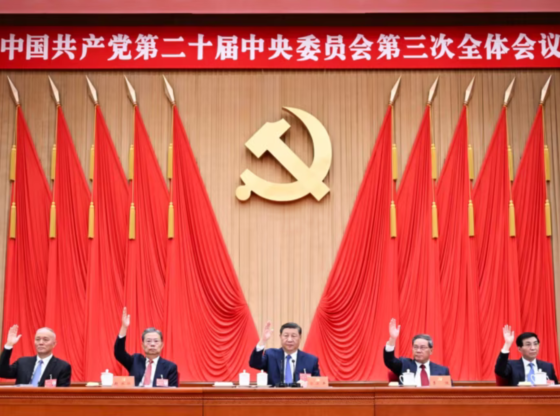The communiqué of the Third Plenary Session of the 20th CPC Central Committee set the tone of “comprehensively deepening reform and promoting Chinese-style modernization”, but did not release any exciting economic stimulus measures. Chinese officials admitted on Friday (July 19) that promoting Chinese-style modernization faces many “complex contradictions and problems”. This shows that the implementation of future policies will be full of twists and turns.
After the four-day Third Plenary Session of the 18th Central Committee of the Communist Party of China ended on Thursday (July 18), officials made a series of seemingly contradictory promises, from modernizing the industrial system while expanding domestic demand to stimulating growth while curbing debt risks, without explaining how they plan to resolve the contradictions between these policy goals.
There are growing concerns that without structural reforms to give consumers a larger role in the economy, debt will continue to outpace economic growth and drive up risks in support of goals of industrial modernization and global influence.
Tang Fangyu, deputy director of the Policy Research Office of the Central Committee of the Communist Party of China, acknowledged the challenges at a press conference on Friday.
“Advancing modernization with Chinese characteristics faces many complex contradictions and problems, and we must overcome multiple difficulties and obstacles,” said Tang Fangyu.
“The deeper the reform goes, the more complex and acute the conflicts of interest it touches upon become,” Tang Fangyu added.
The contradictions in China’s policies have long existed, including increasing the added value of manufacturing, strengthening social security, relaxing land use and improving local government tax revenue.
But the task of making tough choices is becoming increasingly urgent as China’s economy faces multiple challenges, including a sluggish real estate market, the risk of deflation, higher foreign tariffs and a local government debt crisis.
Julian Evans-Pritchard, head of China research at Capital Economics, warned that “high debt levels combined with growing deflationary pressures could ultimately lead to a Japan-style situation of low growth and very low inflation.”
“disappointing”
Some economists were disappointed by the initial statement released at the Third Plenum, which largely continued existing policies.
“There’s nothing new under the sun: the same industrial policies, the same ideas,” said Alicia Garcia Herrero, chief economist for Asia Pacific at Natixis SA.
“There really wasn’t any change in direction, no consumer-led growth, no mention of market forces, nothing. It was really disappointing.”
Shi Heling, a professor at the Monash University Business School in Australia, expressed a similar view. He told VOA that the entire content of the communiqué was “disappointing” and lacked important directions such as how to boost Chinese consumer confidence, deal with external challenges such as foreign capital flight, or reveal new economic ideas, as if the author had “laid down”.
Chinese stocks were flat on Friday, just above a five-year low hit in early 2024, suggesting the plenary session failed to boost investor sentiment.
China is expected to release a document with more detailed policy plans in the coming days.
Supply and consumption
The Third Plenum of the Communist Party of China in 2013 had claimed that the market would play a decisive role in resource allocation, including the goal of making domestic consumption the driving force of growth. But within a few years, the party began to backslide and then move in a new direction.
Many analysts believe national security concerns are pushing China in the opposite direction. The Communist Party has decided to put the party at the core, and the government has stepped up its regulatory crackdown on a wide range of economic sectors, including technology and finance, in recent years.
Last year, Xi Jinping proposed the new term “new quality productivity” as a new growth driver, hoping to achieve industrial expansion through scientific research and technological breakthroughs to help China escape the middle-income trap. However, this policy direction once again bypassed consumers, and the plenum reiterated this point.
Harry Murphy Cruise, an economist at Moody’s Analytics, said there remains a tension between expanding economic supply and boosting household spending.
“The communiqué focused mainly on ‘new quality productivity’, ‘technological revolution’ and ‘industrial transformation’. Support for people’s livelihood was not mentioned until the very end.”

